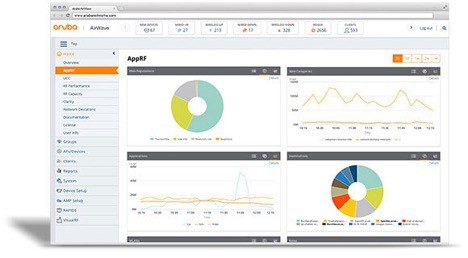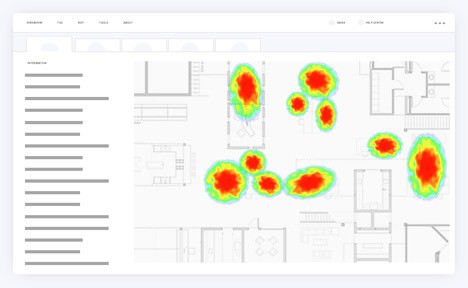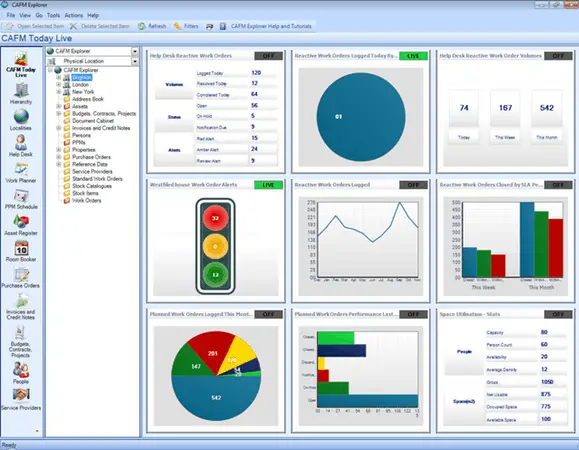Computer-Aided Facility Management is one of the evolving business software, gaining a strong foothold in the app market. A lot of individuals termed it one of the most complex and mysterious software, but it does not have to be. It is managed by CAFM software. Read more definitions in our Glossary, “What is Computer-Aided Facility Management?”
What does CAFM stand for?
It could be confusing trying to figure out the acronym and its meaning, as well as, what makes it stand out from other management and maintenance system software. It is not helped to be that CAFM technology also connotes facilities management software or facility management.
It has been used in many pieces of literature as integrated workplace management systems(IWMS), computerized maintenance management systems (CMMS), enterprise asset management software (EAM). While it may perform similar functions with other related software, it is unique in its own and offers slight specialized features from those listed.
It will be perfect to understand the differences between all these enterprises software before focusing on the capabilities of CAFM.
CMMS is the heartbeat or the core functionality in this software group. Its focus is on tracking and scheduling maintenance on enterprise assets. AEM is a long term, system software that tracks and plans the situation and asset profitability all through their life cycle. IWMS’s chief concern is on the individuals working within the facility. Computer-Aided Facilities Management focuses on the entire facility.

What is the CAFM Software?
What then is CAFM by the way and how does it enhance businesses. Fundamentally, Computer-aided facilities management software’s focus is to map out a complete plan for a facility or a building, plus the daily operations that take place within it. It was defined by the International Facility Management Association(IFMA) as the ‘practice of coordinating facilities and physical workplace with the individuals and the daily operation of the business.
Its technology includes behavioral science, business administration, engineering, and architecture concepts to enhance the proactiveness of the organization. A better understanding can be gained by thinking of CAFM as a holistic commercial building or facility maintenance apparatus having different layers and functions.
Information Technology
This is the focal point of CAFM. It is the primary functionality that differentiates it from the previous adaptations of facilities management being that it employs computer-aided design(CAD) visuals and elements in conjunction with alphanumeric information processing.
Different software that deploys business intelligence features and tools using information sourcing and data analysis is fast gaining momentum. The info-centric approach to business management is aiding decision making to optimize every aspect of their business.
CAFM uses Computer-Aided Design Technology in diverse capabilities. For instance, interactive floor plans are used by real estate establishments. This helps clients walk into a home that has never been built.
Maintenance Management
Just like Computerized Maintenance Management System (CMMS), Computer-Aided Facility Management provides management capabilities. Constant reconfiguration enables assets operating at peak productivity, and performing preventive maintenance reduces beyond replacement or repair. Coupled with maintenance support and scheduling, CAFM frameworks make asset monitoring modules available to assist clients in staying informed on the situation of the asset.
Other vital aspects of CAFM tools use data- real-time data to be specific- in aiding different forms of maintenance. For instance, it can enhance holistic support like including preventive maintenance, routine operational maintenance, and work orders to improve asset management. This is the very aspect where CAFM is utilized in collaboration with CMMS as CMMS frameworks are designed for the assessment of different maintenance needs.
Physical Building Administration
One of the most exciting and popular focal features of a CAFM is its capability in managing the specific infrastructure within the facility. For instance, diverse CAFM frameworks can be synchronized with HVAC asset, lights, and other assets in the facility.
Some of these functionalities permit remote management. A facility manager can turn door and windows locks on and off or set thermostats remotely. Many others provide energy monitoring and automated meter reading to detect changes in your asset usage. This saves money, enhance safety, and assists the environment in keeping excessive energy consumption.
Although most computer-aided facility management frameworks will provide these mainstream features, most vendors don’t describe how the functionalities can enhance business productivity. Most times, the essential elements are coded in jargons like ‘property management solutions and energy consumption features.’ They don’t go an extra mile to state the CAFM services can enhance daily planning in practical dimensions.
When clients discover that the CAFM frameworks are designed with this functionality, it is usually utilized with passion for its time-saving and labor-saving potential.

Floor Plans and Space Management
Designing Buildings Wiki defines the functionality of CAFM as ” to enhance the operational and strategic aspects of facilities management, including infrastructure and technical, administrative endeavors, as well as the vital procedures needed for management and planning. Many organizations and industries can deploy CAFM because of its versatility.
It serves as a database that stores data on your facilities. This data incorporates construction data, energy consumption, essential contact details, a list of floorplans, infrastructure located within a facility, fire and safety data, etc. Instead of depending on Excel Spreadsheets or paper files, clients can organize this data neatly with the computer-aided facility management system where it can be used as well as saved.
Many uses of CAFM tools are deployed to assist with resource allocation and space management. Some of these impact where different infrastructures are situated within the facility. Other aspects examine how to use the space in each room, or how to design an industrial or commercial processes in the facility. Some of these incorporate workforce management. Generally, facility managers label space for a specific use and utilize the CAFM to implement the usage in detail. Read more on Quick Step-by-step Guide on How to Plan Office Seating
Leasing and Real Estate Management
Other aspects of CAFM examines property management, like leasing, to enhance the enterprise use of the commercial real estate. From daily operations like conference booking or room scheduling to long-term lease organization, the best CAFM software will provide industry-grade property management tools.
Administrative Support
CAFM is not directed at the down-and-dirty physical assets and building either. Building or facilities management tools provide different administrative support functionalities that assist in streamlining office staff.
Clients can adapt material and package tracking features to monitor every operation within the facility. Whether that means procurement or purchasing, audit trails, hazardous items, shipments, and deliveries, CAFM can assist in managing it seamlessly and safely.
Computer-Aided Facility Management can assist in managing human resources. A lot of CAFM frameworks provide a traffic monitoring feature that logs visitors and provide form templates for supervisors and contractors to ensure the right individuals are in the facility. This has included the bonus of building resilience for your organization with no extra cost.
Lifecycle Management
A major purpose of computer-Aided Facility Management is to assist managers in establishing an adequate optimization of an organization’s infrastructure while saving cost through the lifecycle of the asset.
Other features of CAFM frameworks assist decision-makers factor in long-term needs, for instance, capital enhancements and planning. The concept is that since the structure covers not just a part of the facility, but every aspect, managers can utilize it as a template or roadmap for different forms of predictive planning and asset management. This can save the business a lot of money, thus coordinating facility activities efficiently.
CAFM software is utilized in several industries for many reasons. Some of the specific functionality and tools depend on the user’s industry, and what form of infrastructures are functioning in the building. Enterprises in diverse fields utilize CAFM frameworks to manage the overall usage of an enterprise facility and become proactive in enhancing its asset management.
Other considerations
There are other essential aspects of CAFM to appreciate before you start the shortlisting process.
Deployment
The procedure engaged in deploying software can significantly impact the enterprise implementing it, otherwise, if not on the end-user. You can deploy software using three methods: on-premise, online or cloud, or a hybrid of the first two methods.
On-premise software is hosted by hardware within your premises. This hardware requires a proactive IT team typically to troubleshoot and maintain, as well as the physical space to locate it. On-premise tools or software vendors usually charge a one-off fee per client license, which may be steep-but once it is paid, you are ready to launch and can remove users if you want.
On-premise also provides more features for customization, as you possess total control over the software. This total control ensures your data is not migrating back and forth to an off-premise server, where it is prone to hacking- but it also saddles you with your endpoint security.
Cloud-based deployment is usually cheaper compared to on-premise, as the charges are per-user, per month, but the price can accumulate quickly. The customization of a web-based framework can be costly. But it is accessible and agile from any client portal as long as there is an internet connection, making it a practical solution and lightweight for many enterprises.
Because the vendor is responsible for the information security for this type of deployment, most provide top-notch holistic security features on the market for the client’s information. 62% of IT experts say on-premise security is better and stronger compared to cloud security, so the argument remains for now.
Hybrid combines the two formats. This can assume diverse forms and is customized for different sectors. It usually incorporates the capability to migrate from on-premise setup to cloud-based as client’s requirements change- for example, an on-premise platform supplemented by mobile applications for mobile techies.
Computer-aided facilities management software provides different benefits for forward-thinking establishments using them. Hopefully, you have gained a better comprehension of the uses and the features of CAFM software.
Does this article provide insights about CAFM software? Read 28 Workplace Software Tools You Need To Know.
Related Questions
What does the CAFM software focus on? Computer-aided facilities management software’s focus is to establish a complete plan for a facility, plus the daily activities that take place within it.
What is Computerized Maintenance Management System? CMMS (computerized maintenance management system) software is an aspect of CAFM software that is entirely focused on maintenance decisions and workflow.
Join Open Sourced Workplace



